Repairs for Common Buttonhole Sewing Mistakes
Learn quick machine-stitched solutions for a "hairy" buttonhole and a cut buttonhole bar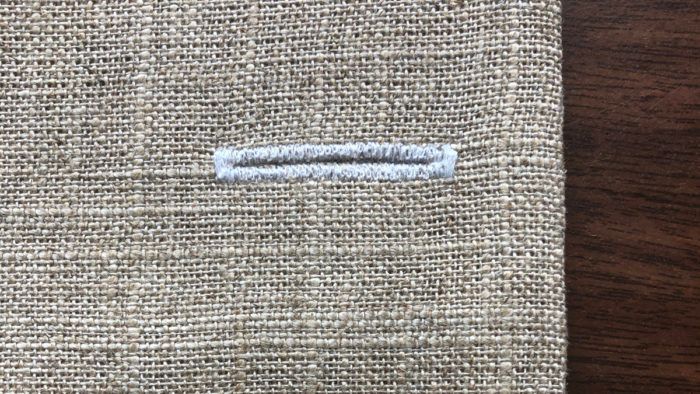
This scenario may sound familiar: The garment has been finished and all that is left to do is to make the buttonholes. You hesitate because you want the buttonholes to be perfectly placed and sewn. You finally finish and cut each open, but there are extra strands of the garment’s fabric in the center of the buttonholes—those dreaded hairy buttonholes—or the buttonhole stitching has been accidentally cut and starts to ravel. You are going to need buttonhole fixes.
Don’t panic. I’m here to help.
Note: The samples shown were sewn with contrasting thread for better visibility. You can use matching or contrasting thread as you wish.
Extra strands of garment fabric emerge from buttonholes after they have been cut open, especially on garments made with woven fabrics such as linen, silk, and cotton.
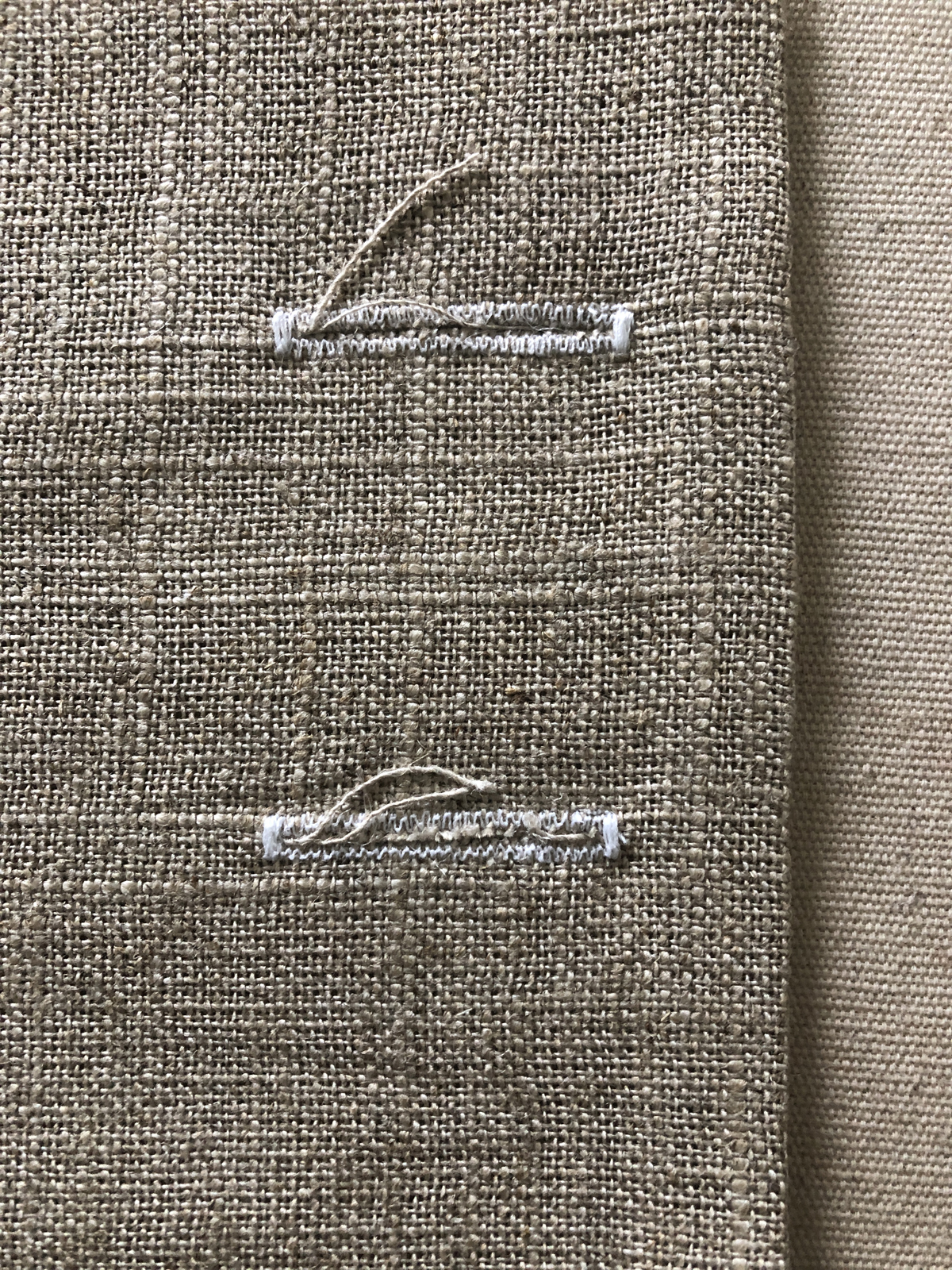
Fix a hairy buttonhole
1. Gently pull the extra threads away from the buttonhole between the zigzagged sides. Be sure not to cause snags or pulls in the garment when coaxing out the extra threads.
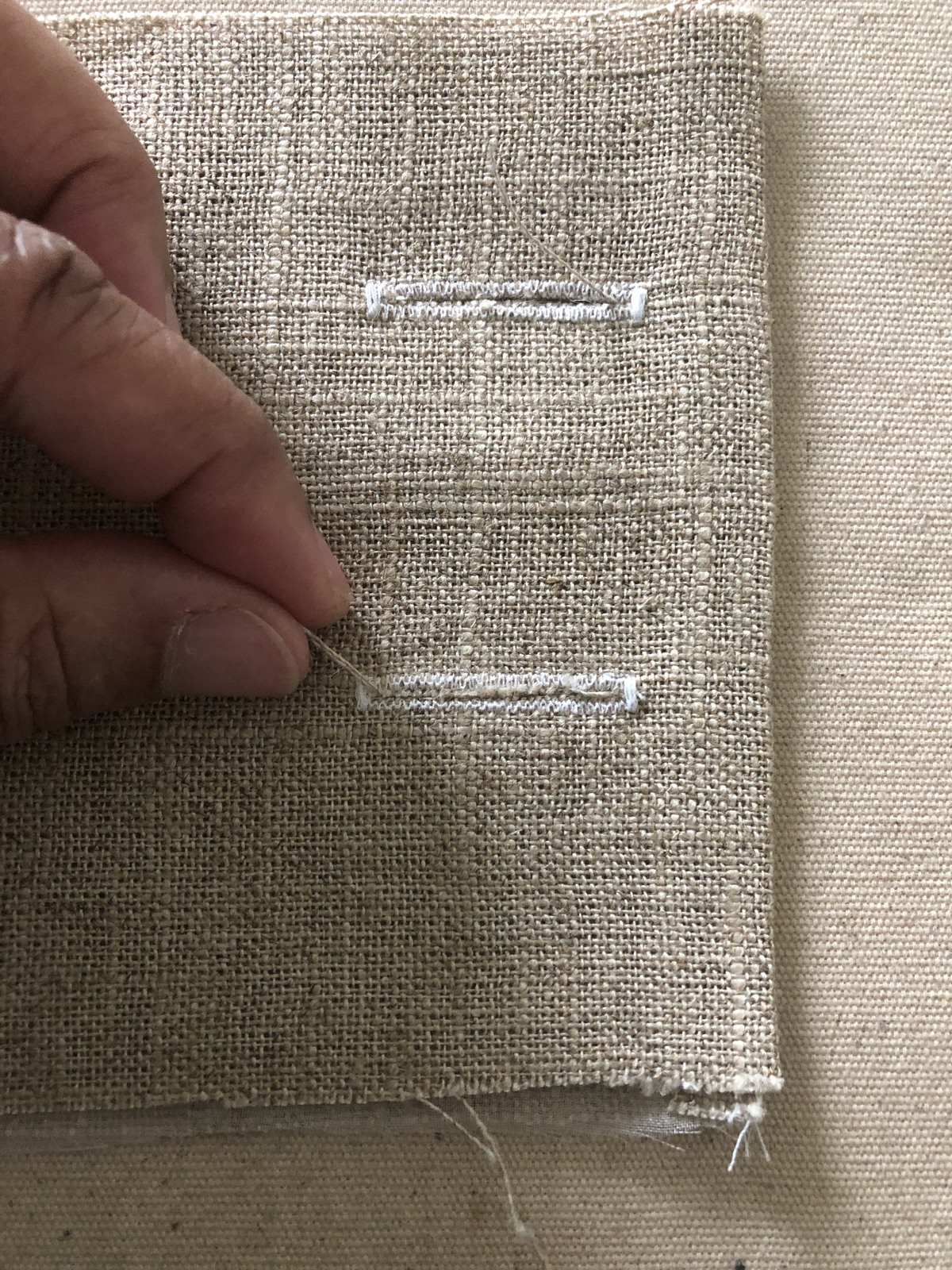
2. With small, pointed scissors, cut the extra threads away.
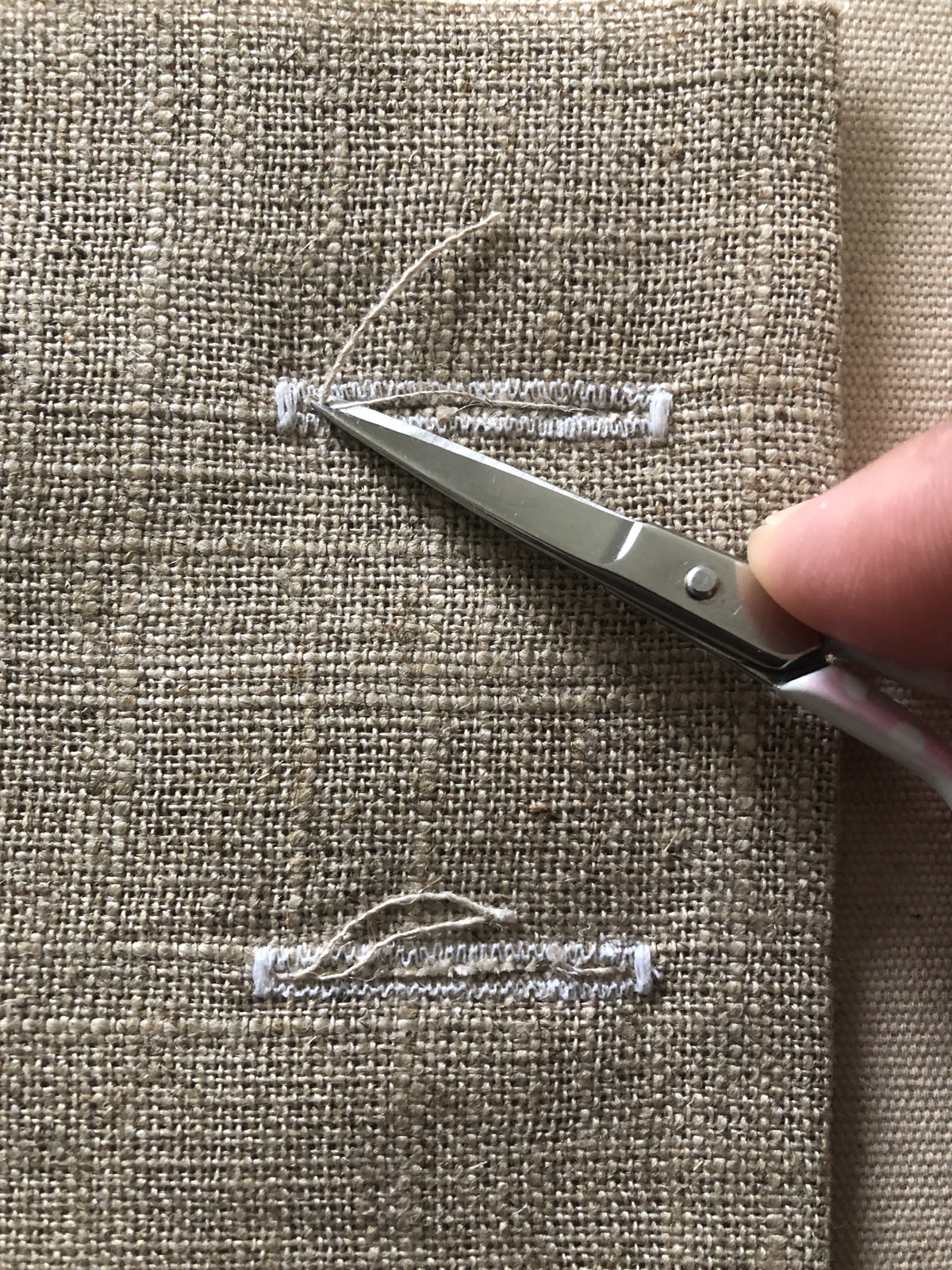
3. Use a light- to medium-weight tear-away stabilizer to reinforce the buttonhole on the garment’s underside (facing side).

4. Set your sewing machine to a narrow zigzag length and width. Test the settings by sewing on a fabric scrap. You want to match the look of the long sides of the garment’s buttonholes.
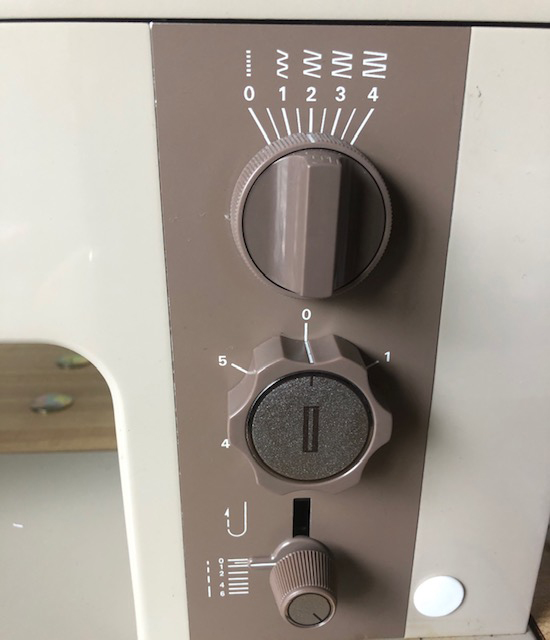
Since machine settings vary, you need to test and adjust the machine to see what works best.
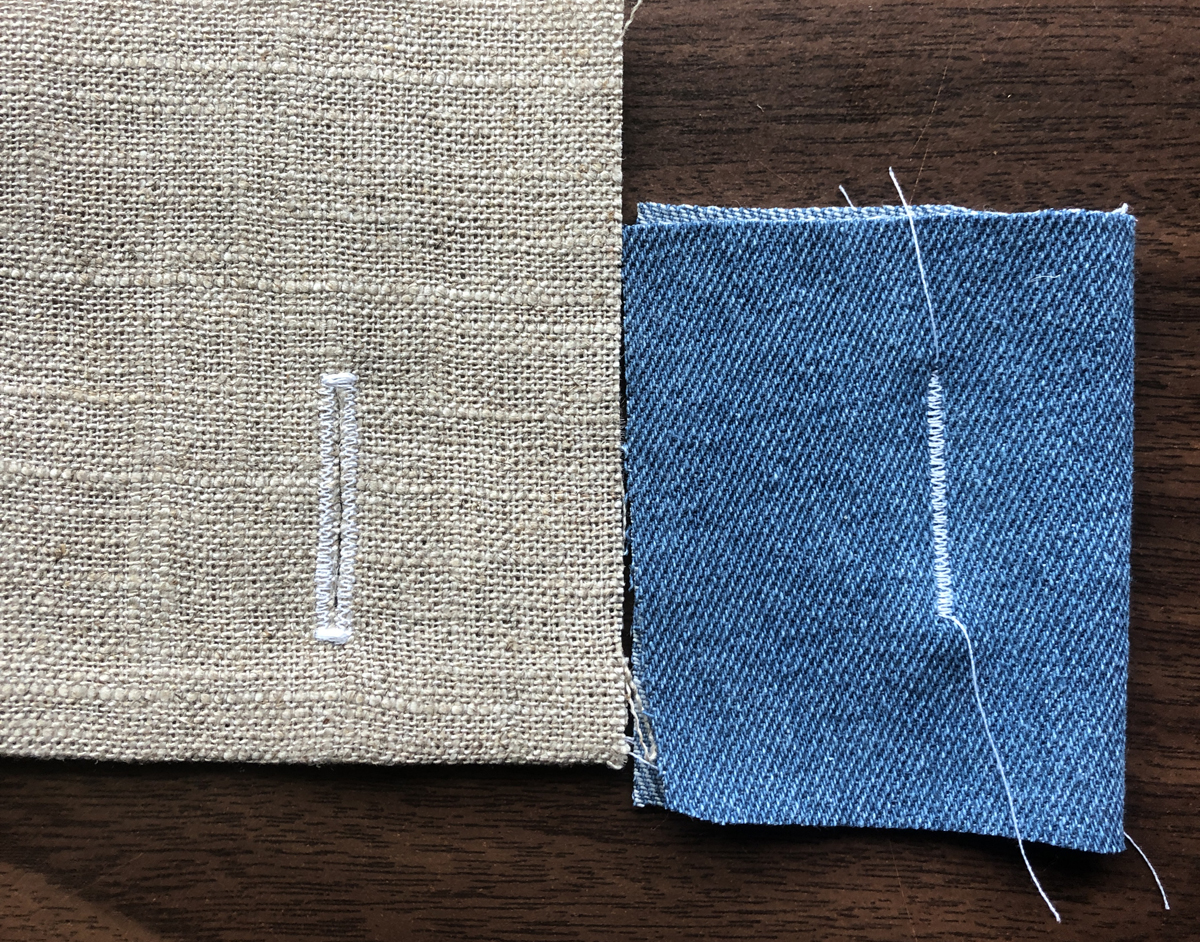
5. Fold the tear-away stabilizer in half and place it beneath the garment. Line up the area to be stitched along the center of the all-purpose sewing machine foot. Gently pull the buttonhole open enough so that you are zigzagging on only one side of the…
Start your 14-day FREE trial to access this story.
Start your FREE trial today and get instant access to this article plus access to all Threads Insider content.
Start Your Free TrialAlready an Insider? Log in

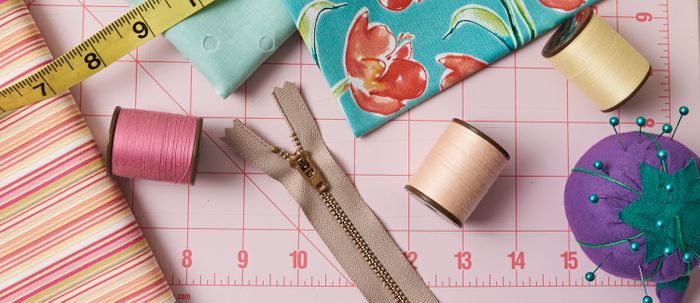




Thank you so much. A technique that I have needed so often. And when the buttonhole has a problem on a garment after I have worked carefully for a length of time, I am not good at an imaginative response. This gives me a go-to first aid solution to the problem. Thank you.
I use fray check along the cut line before cutting the buttonhole. It prevents most fraying. Alternately, after removing the frayed threads, using a fine line of fray check often eliminates the need for zigzagging over the existing stitches.
One last tip that I would like to share is when the interfacing -that does not match the fashion fabric color- peeking through on the right side of the garment. It happens especially if the zigzag is not close together enough (long stitch length). I use a closely matching permanent marker to paint along the cut edge to conceal the mismatched color. (it does not work with black interfacing. It is hard to disguise!)